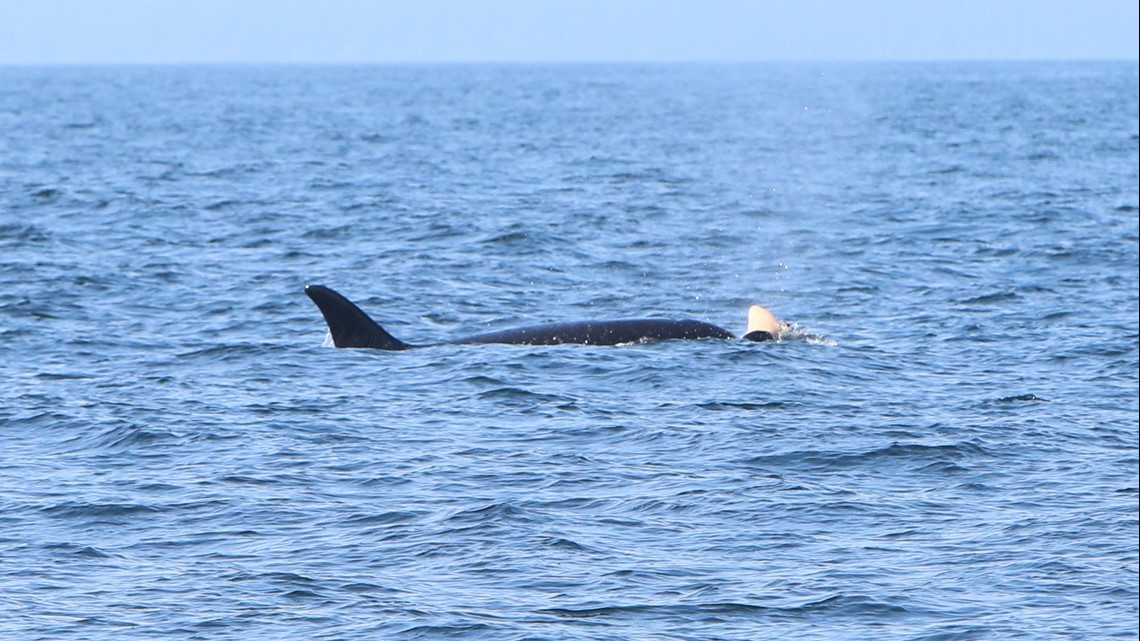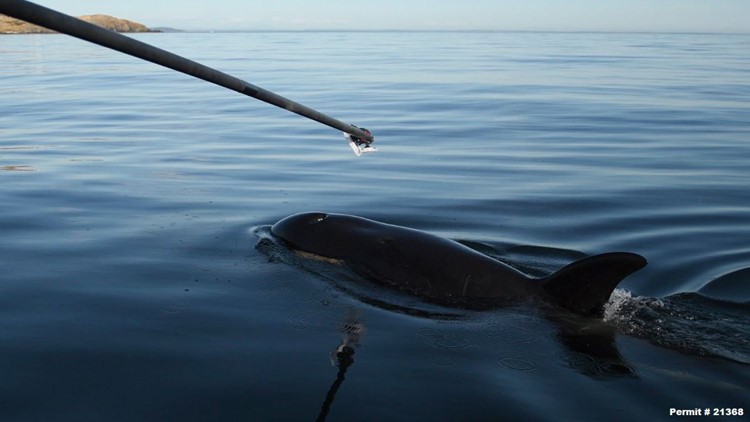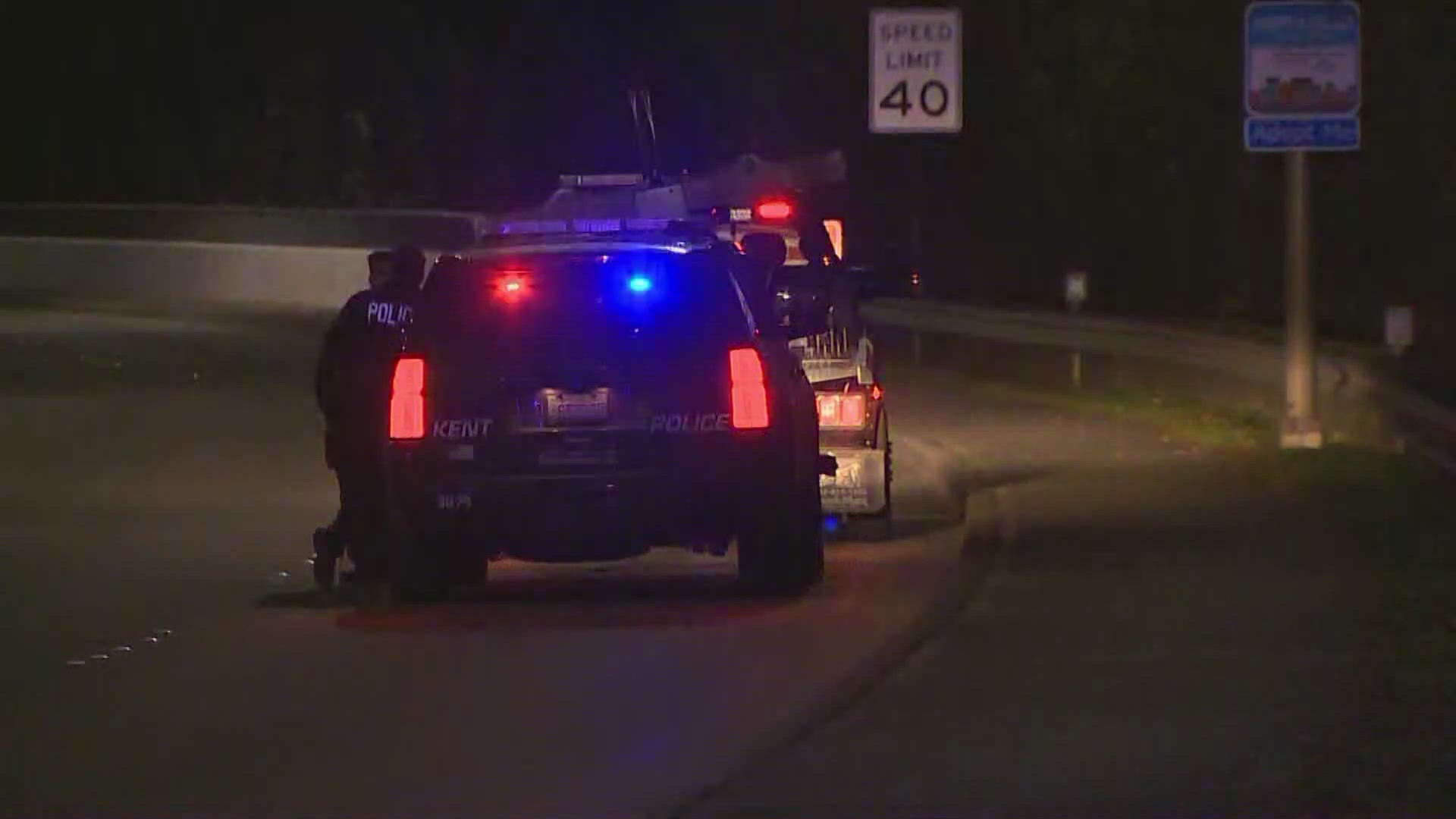A team of whale experts injected an ailing Southern Resident orca with antibiotics Thursday in a rare emergency effort to save her. The NOAA response team treated J50 with a long-acting broad-spectrum antibiotic through a dart while they await results of the whale's health assessment.
NOAA Fisheries says the international team reached the 3½-year-old orca in the waters near Washington state's San Juan Island. Researchers say J50 was thin but able to keep up with her mother and siblings.
In a media update Thursday morning, Fisheries and Oceans Canada (DFO) confirmed that permits are being issued to inject the ailing southern resident orca with antibiotics. Prior to Thursday, similar permits had been issued in the United States, leading to disparities between the treatment options available on either side of the border.
The J pod was spotted Wednesday heading towards inland waters. Also spotted Wednesday was J35, the female orca whose mourning behavior has captivated the world. The Center for Whale Researchers confirmed that she was still seen pushing the now-deteriorating corpse of her newborn calf. Thursday was the 17th day since its death.
Sheila Thornton, the lead killer whale research scientist for DFO, said that the researchers have “obvious concerns” about the behavior of J35. However, the focus this week has been on J50, so no assessment of J35’s condition has been done.
Researchers worry that J35 is not feeding properly and is expending too much energy pushing the corpse. However, Dawn Noren, a research fisheries biologist with the National Oceanic and Atmospheric Administration (NOAA) Northwest Fisheries Science Center, said that a female killer whale could fast for a period of up to four weeks before it became detrimental to its health. In addition, since J35 has just given birth, she “may have extra lipid stores built up” that were preparing her body for nursing.
Thornton said there are no current plans to intervene in the case of J35. The idea of removing the calf from her mother is “not on the table,” according to Brad Hanson, a wildlife biologist with NOAA.
Any intervention with the pod will be contingent on the behavior of the whales, as well as the weather and swell conditions. Based on current forecasts, NOAA and DFO are not anticipating an opportunity for intervention before Sunday morning.





